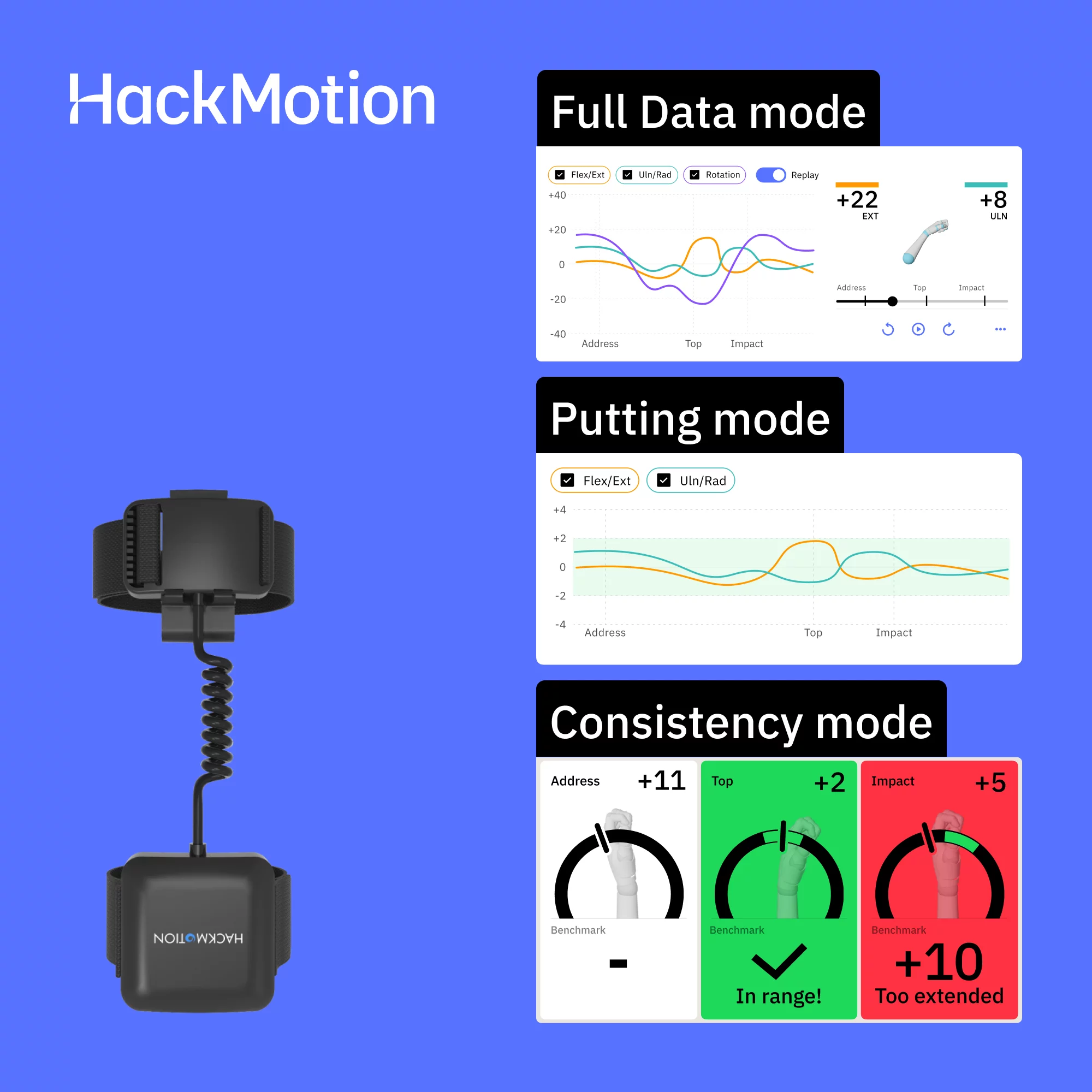Skytrak Data – What Data does Skytrak Measure?
Posted in Launch Monitor Data, Launch Monitors
What data does Skytrak measure? Skytrak is a photometric launch monitor. This means it uses high speed cameras to measure ball flight data. Skytrak provides accurate ball flight data that helps you understand how the ball moves in the air and where it would have landed. This is essential for a golf simulator experience you can use to improve and have fun.
Skytrak directly measures ball speed, back spin, launch angle, side spin and side angle. These parameters are modelled to calculate accurate approximations of further data including carry, roll and total distance, clubhead speed and angle of descent. Skytrak then renders the flight path in 3D.
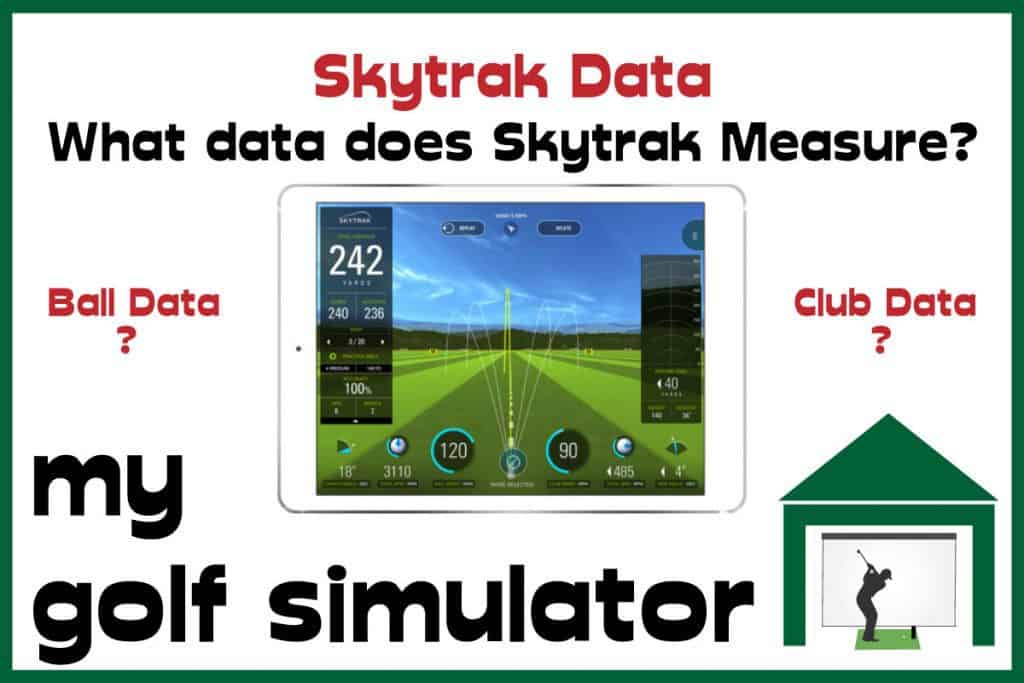
Skytrak does not directly measure club path data but there are accessories for Skytrak that do.
With Skytrak you can play anywhere, anytime. Skytrak allows you to practice at home when you cannot get outside. This article will help you to understand and use the data shown on Skytrak to reduce your handicap. Each and every data parameter can be used by used to improve your game.
How Skytrak Works
Skytrak is a photometric launch monitor, which means it uses super high speed cameras to record images of the impact between club and ball. From these images, Skytrak can accurately calculate the parameters of ball speed, back spin, launch angle, side spin and side angle. We explain each of these parameters below.
Skytrak sits in front of the golfer, next to the ball. There is a small red laser dot emanating from the Skytrak unit on which you place your ball. Skytrak is light, portable and can be used both indoors and outdoors. I recommend always using the protective case when using Skytrak to avoid any mishaps from poor swings or shanked balls!
Skytrak has it’s own modelling software that allow further data to be calculated using the parameters that have been measured directly, as we discuss below.
In order to get accurate data, you will need to ensure that the Skytrak is in the correct position, square to your golf ball and at the same height as your hitting mat.
The monitor may need to be raised above ground level if the height of the mat and your tee means it is too low if simply placed on the ground. While the monitor will work if you hit the ball off grass, readings may be less accurate, especially if you take a divot. Get the best out of the equipment by using a mat and ensuring the setup is correct. We cover Skytrak Accuracy in detail here.
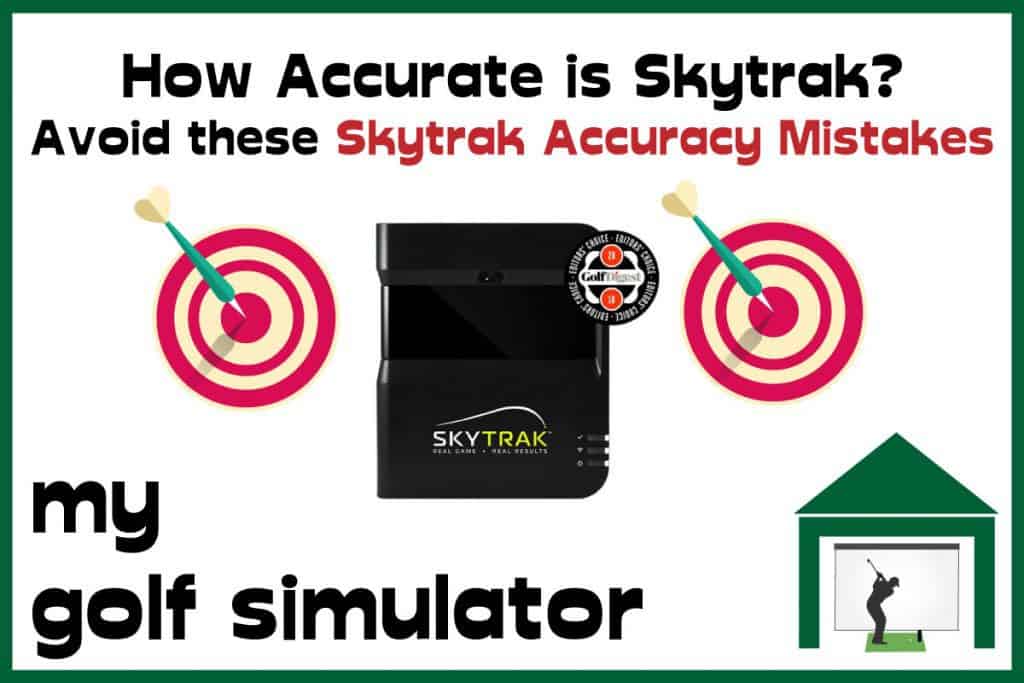
Skytrak Directly Measures these Data Parameters
Once you buy Skytrak and charge it up, you have taken a step towards improving your golf. You will need Wi-Fi in order to get the data and then simply follow the instructions on setting it up.
Skytrak directly measures five different things about your golf ball after impact:
- Ball Speed in mph
- Launch Angle
- Back Spin
- Side Spin
- Side Angle
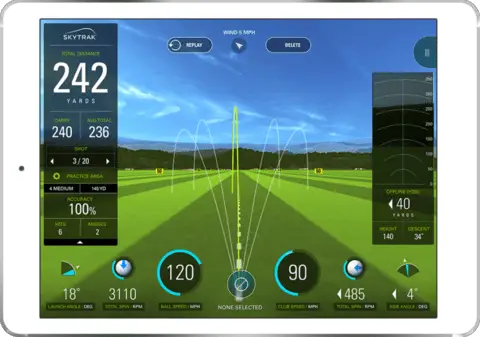
Skytrak also Calculates some Data Parameters
The software is then able to calculate how far the ball would have travelled in the air before hitting the ground and then what roll you could have expected in normal circumstances.
These data are calculated by the modelling software inside Skytrak, based on the actual measured ball data above and the vast amount of real shot data that went into their model.
Skytrak calculates the following data using the directly measured ball flight numbers and their own modelling:
- Carry distance, Roll and Total Distance
- Clubhead speed
- Angle of Descent
- Distance offline
- A 3D flightpath with apex height and hang time is then rendered using all of the above data.
What Data does Skytrak Not Measure?
Skytrak does not measure the following data:
- Club Path
- Face Angle
- Face to Path
- Dynamic Loft
- Attack Angle
- Swing Plane
- Swing Direction
- Spin Loft
- Spin Axis
Does Skytrak Measure Club Path?
You’ll see that the majority of the data that Skytrak doesn’t measure relates to the movement of the club and club face.
Skytrak actually looked at releasing updates where these numbers were included and somehow modelled from the Skytrak raw data. However this never came to fruition as it couldn’t be brought to an accuracy that SkyGolf were happy with.
Can I add hardware to Skytrak to include Club Data
You can add attachments to your golf club that integrates with Skytrak and provides it with the additional raw data it needs to provide a suite of club data numbers.
These are small and contain components such as gyroscopes, they attach to the club shaft. They’re light, portable, and easy to use!
3Bays PRO Golf Swing Analyzer with Skytrak
The 3Bays Pro golf swing analyser is a device that fits onto the end of your club shaft and provides you with several very useful club data parameters.
It doesn’t seem like the 3Bays Pro integrates directly with Skytrak but you could use the two alongside each other to include club data within your practice session.
There is also a putting analyzer sold alongside the full swing analyzer. You can add either or both to your practice.

Skypro with Skytrak
If you can get your hands on a Skypro device, it integrates very well with Skytrak and adds lots of great club data to your golf simulator practice. I checked with Skygolf themselves and was told that unfortunately the product had been discontinued. You may find it infrequently on ebay or within forums. I used one myself in the past and thought it was great!
Which launch monitors do provide club data?
At Skytrak’s price point, you’ll struggle to find a launch monitor that does record a full suite of club data. For just under $2000, Skytrak is a fantastic launch monitor that provides a solid golf simulator experience and a good amount of data that you can use to improve your game.
The following launch monitors do provide advanced clubface data, but most are in a price bracket far higher than the modest Skytrak:
- Optishot 2 (limited Club data, Optishot 2 is cheaper than Skytrak)
- Uneekor QED
- Uneekor EYE XO
- The Foresight Range such as GC Quad and GC2 when used with HMT add on
- Flightscope X3
- Ernest Sports ES16
- TruGolf Simulator Packages
- Trackman
- Ultra Premium Golf Simulators like Golfzon, HD Golf, About Golf, Fullswing Golf and more
The cheapest of them is the Uneekor QED. Mevo Plus is in the same price range as Skytrak and gives a couple more readings such as angle of attack and spin loft, but not a full suite of club data.

Using Data to improve in wind and weather
It is actually possible to adjust conditions of play to incorporate wind and the variety of directions it may be blowing.
That may be a crosswind coming from left or right, playing into the wind which clearly affects the distance you will hit the ball, and the flight you may want the ball to take. If you are hitting downwind, your distances will change as well.
This is great practice for your game, you can learn to flight the ball down and improve in strong winds, without getting cold and buffeted in all directions on a horrible day at the course.
Skytrak Data in Detail
Directly Measured Ball Flight Data
Ball Speed in mph
Ball Speed data alone can sometimes identify your standard as a golfer. Professionals may record 170 mph by having a swing speed of at least 115 mph. Recreational players will never reach such heights although scratch golfers may get to 160 mph and single figure handicap golfers more than 140 mph. Average golfers whose handicaps are in the mid-teens will usually generate something in the 130s.
Check out Bryson Deschambeau’s recent transformation and this video of him achieving 200mph ball speeds from Youtube channel Golf VN!
Golf ball speed is a product of your clubhead speed and the efficiency with which you transfer that energy to the ball (smash factor). Other parameters such as dynamic loft and spin of course are also intimately related to ball speed.
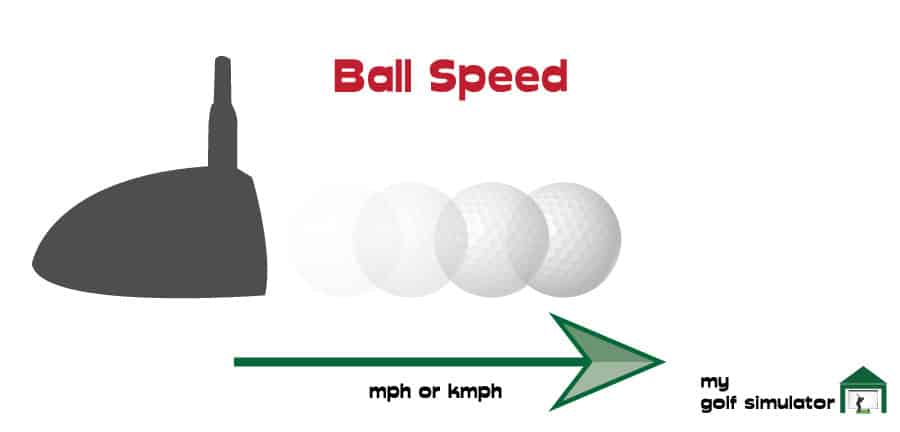
Launch Angle in degrees
Launch angle means how high off the ground the ball sets off. It is the vertical angle at which the ball begins it’s flight.
Launch angle is very similar to dynamic loft, which is the loft imparted to the ball by the club (given the loft of the clubface, shaft lean, face angle and more). However, due to the weight of the ball and other features of the physics of two colliding objects, it will always be slightly less than the dynamic loft.
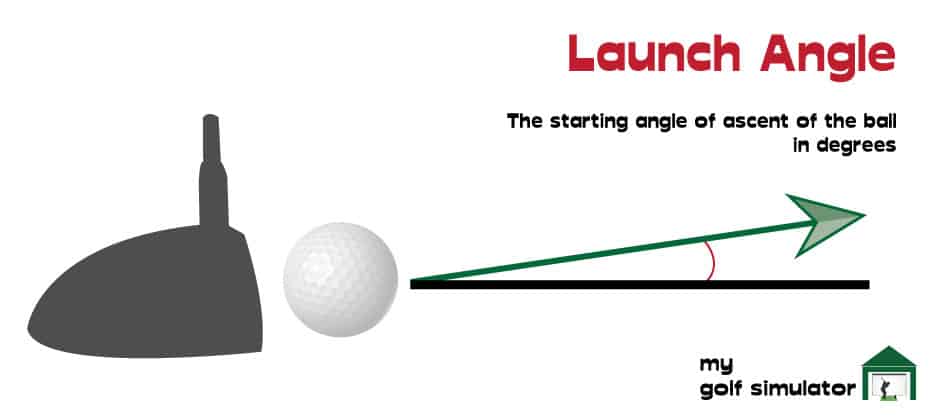
Back Spin in rpm
Good golfers can impart backspin on a golf ball and often do so in order to increase the chances of their being able to get close to the pin. Better golfers can control distance, spin and the height of their shots. Most average handicap golfers do not have the ability to do that and when it happens it is likely to be the result of their striking the ball in a particular way completely be accident.
Back spin is an important number for all golfers however, you can see that you’re striking the ball properly with your driver if you get a spin rate in the optimal zone and not too high or too low. You can also have competitions to see who can spin the ball the highest with a wedge.
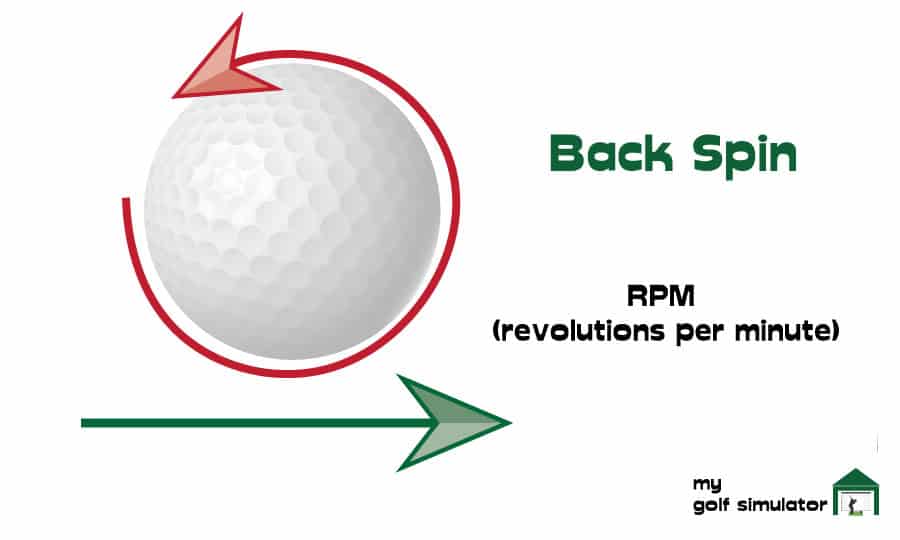
Side spin in rpm
Side spin is usually your enemy when you are playing golf because it inevitably takes your ball away from its intended target unless you compensate for it when you take aim.
You’ll find that side spin occurs when your club face is not square to the ball on impact, either too open or too closed.
While many great golfers hit the ball slightly left to right, or the reverse, they do it in a controlled way, completely intentionally.
Where the data shows that you are regularly imparting unwanted sidespin on your golf ball, you need to make some adjustments which usually start with the basic fundamentals.
You can use the data in your golf simulator along with Youtube videos and personalised lessons from your local golf pro to achieve proper alignment, and work towards a golf swing that is repeatable.
Whether that’s aiming for a neutral ball flight with minimal side spin, or a consistent draw or fade is up to you as a golfer!
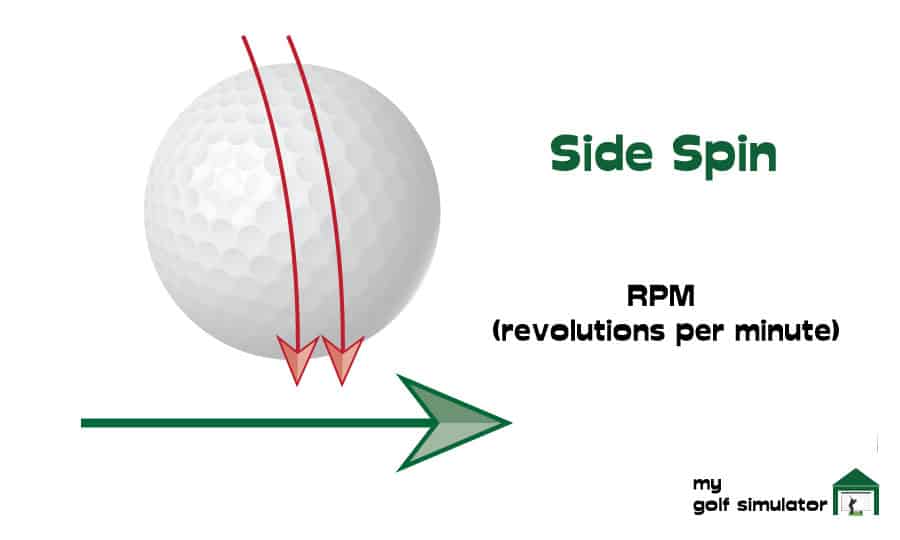
Side Angle (azimuth) in degrees
The side angle is that angle between the actual path of the ball and the intended target line. Side angle is sometimes known as ‘azimuth’ or just ‘side’.
A higher side angle plus any additional side spin is likely to lead to your ball finishing well out of position.
It is indicative of the clubface not being square to the ball when it is struck. A bigger side angle will lead to a bigger push or pull depending on whether the ball starts left or right.

Data Calculated from the directly measured ball data plus modelling
Carry Distance, Roll and Total Distance
Skytrak measures data such as ball speed, launch angle and spin rates and uses modelling within their software to calculate what the expected distances would be. These calculations have been proved to be pretty accurate against industry leading launch monitors.
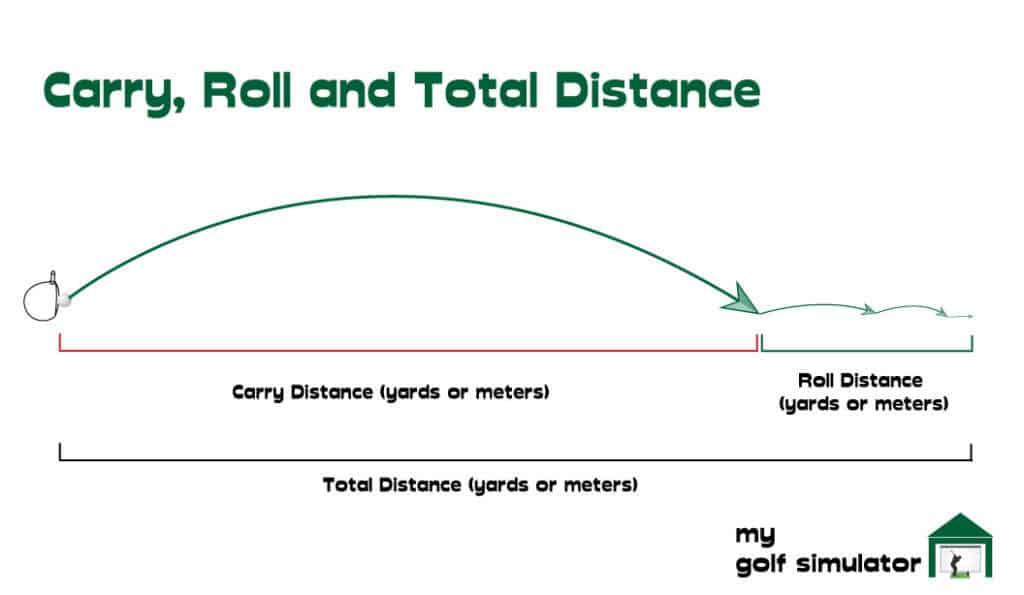
Distance Offline
The distance offline is the distance from the ball’s finishing position and the target line. This is related to both side angle and side spin.
You could start the ball offline and draw/fade it back to the target. You could also start the ball offline and draw/fade it further off the target line. Conversely, you could start the ball at the target and slice/hook the ball away from the target.
Of course as all golfers know, the weather plays a big part in where the ball finishes too!

Clubhead Speed
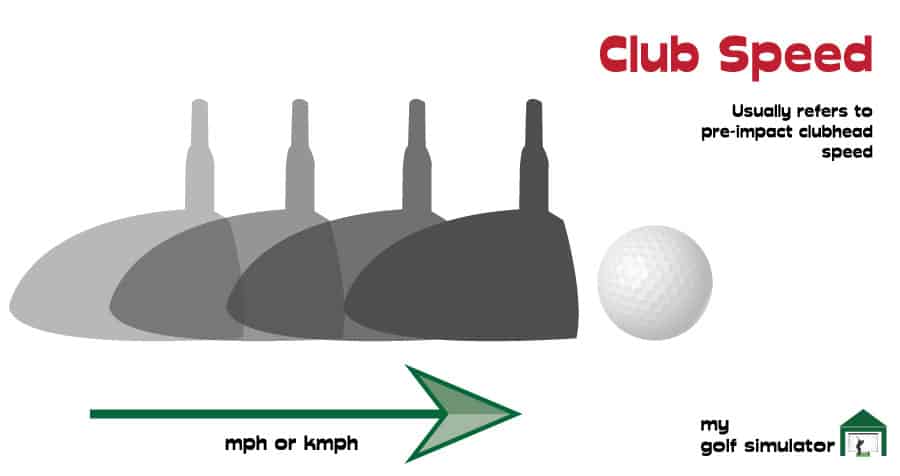
Angle of Descent
If you’re like me, we’ve all hit golf balls super high with a wedge into a very wet green and had it plug. Similarly we’ve all borderline thinned a shot hitting a hard baked out green and had it bounce 40 yards over the back and out of bounds.
Imagine having consistent conscious control over how your ball comes into the green. That could be quite useful. A useful drill in your simulator would be to try and shots the same distance but with different angles of descent.
The angle of descent is different to the angle of attack (which refers to the vertical direction of the club as it approaches the ball).
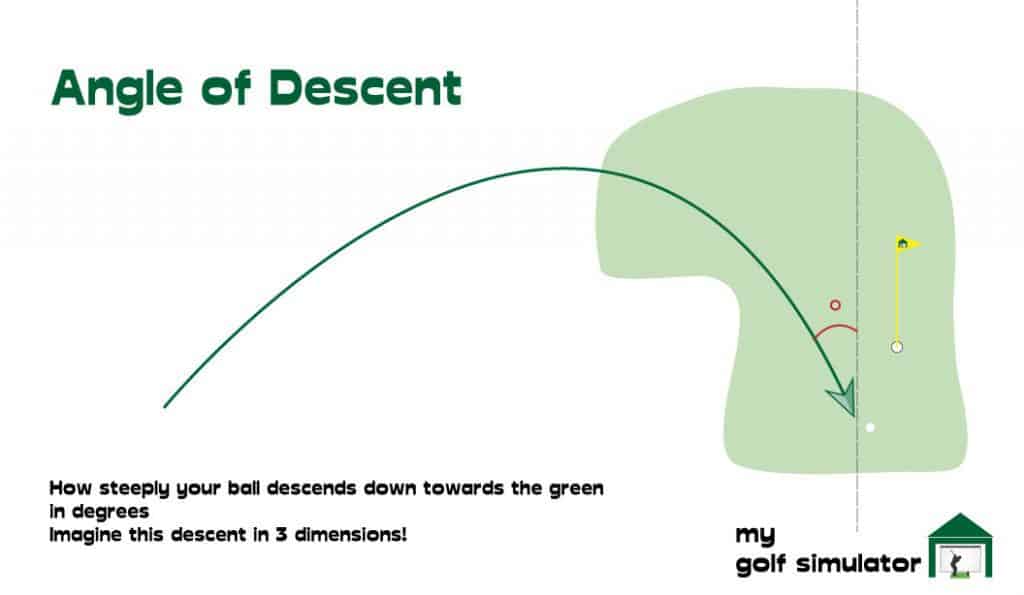
Flight Path, Apex height and hang time
Skytrak uses all of the above data, as well as the weather conditions imputed into the settings, to calculate and render a 3D flight path for the ball.
This flight path will include an apex height and a hang time (how long the ball is in the air).
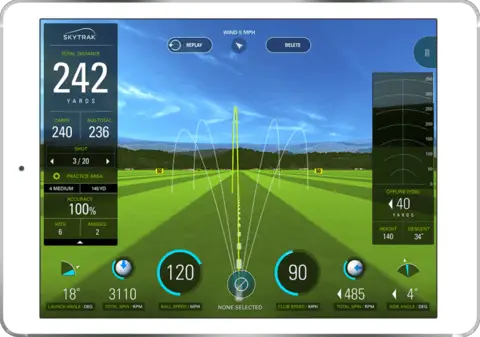
Does Skytrak Measure Smash Factor?
Smash factor is ball speed divided by clubhead speed and it is a measure of the efficiency of conversion of energy from club to ball. It is otherwise known as PTI (Power Transfer Index).
An optimum smash factor number for a driver shot is about 1.49. Many golfers will not quite achieve a 1.49 though.
Skytrak will give you a number for smash factor, however by definition you need the clubhead speed to calculate it. Skytrak derives a clubhead speed numbers from modelling data using the ball flight data they actually record.
Therefore it is hard to work out how they could accurately give a smash factor number when one of the factors that defines it is not directly measured.
Skytrak’s smash factor readings are only as good as their modelling for clubhead speed, however, the modelled clubhead speed and smash factor numbers have been shown to be pretty accurate against premium launch monitors that do directly measure them.

Using Skytrak Data to Practice
You can use Skytrak individually to practise with each of your clubs. It will demonstrate to you how far you consistently hit a specific iron, your driver, fairway wood or rescue club. The data may disappoint you, showing you that your average driving distance is not 308 yards as you thought it was, but it will be accurate!
It is surely more important to have accurate information to help you with your choice of club than telling friends that you hit a specific club an impressive distance? Your handicap coming down is a better way to impress those friends.
There are so many ways you can practice using Skytrak data. You can work on distances and also launch angles and angles of descent to control trajectory. Try practicing draws and fades by observing side angle and side spin rather than specifically club face parameters.
Practice is one thing, but you can also use Skytrak in other ways, depending on the package you buy. For an annual fee, you can simulate playing on some of the top courses in the world including the Old Course at St. Andrews and Pebble Beach.
If you combine Skytrak with a subscription to The Golf Club 2019, you’ll have access to over 150,000 courses, you may even be able to play your local club!

Your friends can join you whether it be in a stroke play competition, a stableford, match play or challenges like longest drives and nearest the pin. Great fun!
Opting for more than the basic package also allows you to store your data for future analysis. You can trace your progress, especially in the areas of the game where data suggested originally that you might be weak.
Conclusion – Skytrak Data will Improve your Game
In the years since Skytrak was launched on to the market, it has been subject to rigorous testing against the best commercial monitors costing a considerable amount more. Skytrak has passed the test of accuracy and established a place at the forefront of the golf simulator market.
This launch monitor provides the chance to play inside all year round. With courses closed for periods because of ice and snow, or even because the ground is waterlogged, Skytrak can keep your interest going and even make you a better player when conditions are good again. If you have not told friends about your purchase, they may wonder how you have managed it. More likely, you will have told them and invited them round to your place for some fun.
The data that Skytrak gives you will allow you to identify your swing weaknesses and work on new skills and challenges. Skytrak will be a fantastic investment in your golf game!
Check out Skytrak at Shop Indoor Golf here!

Skytrak vs Mevo Plus – 27 Comparisons!
Check out my complete guide pitting the two big launch monitor rivals against each other across 27 domains, from space requirements, data, software compatibility, portability, misreads, accuracy, and more.
You will learn exactly which of these two excellent golfing machines suits you and your golf simulator setup the most!
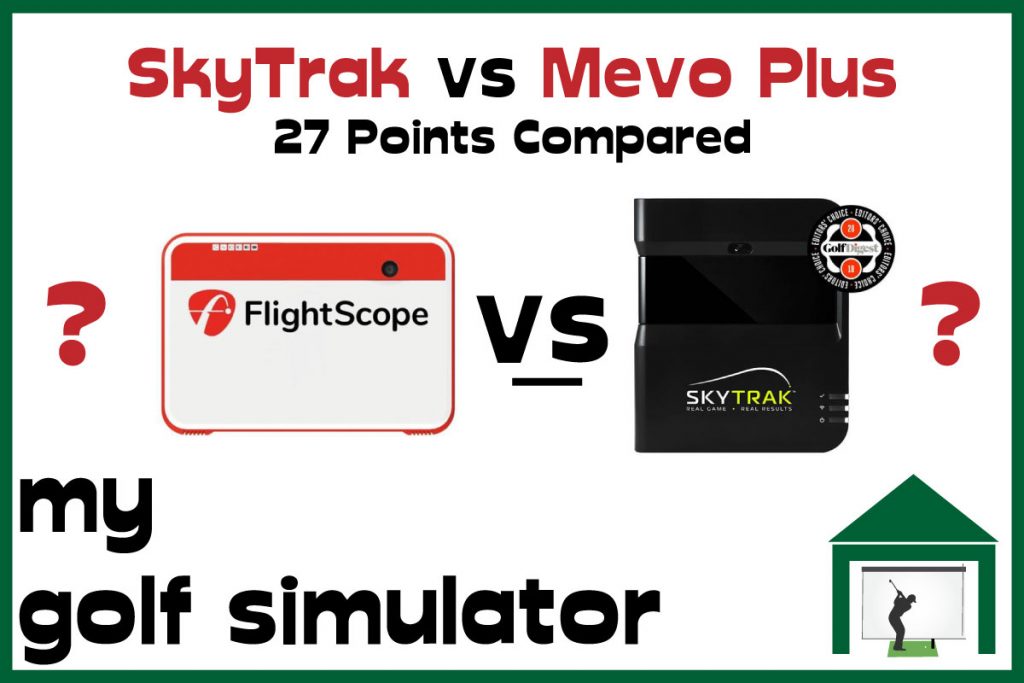
Mevo Gen 2 Space Requirements
Gray Impact Screens – Pros and Cons
ABOUT THE AUTHOR
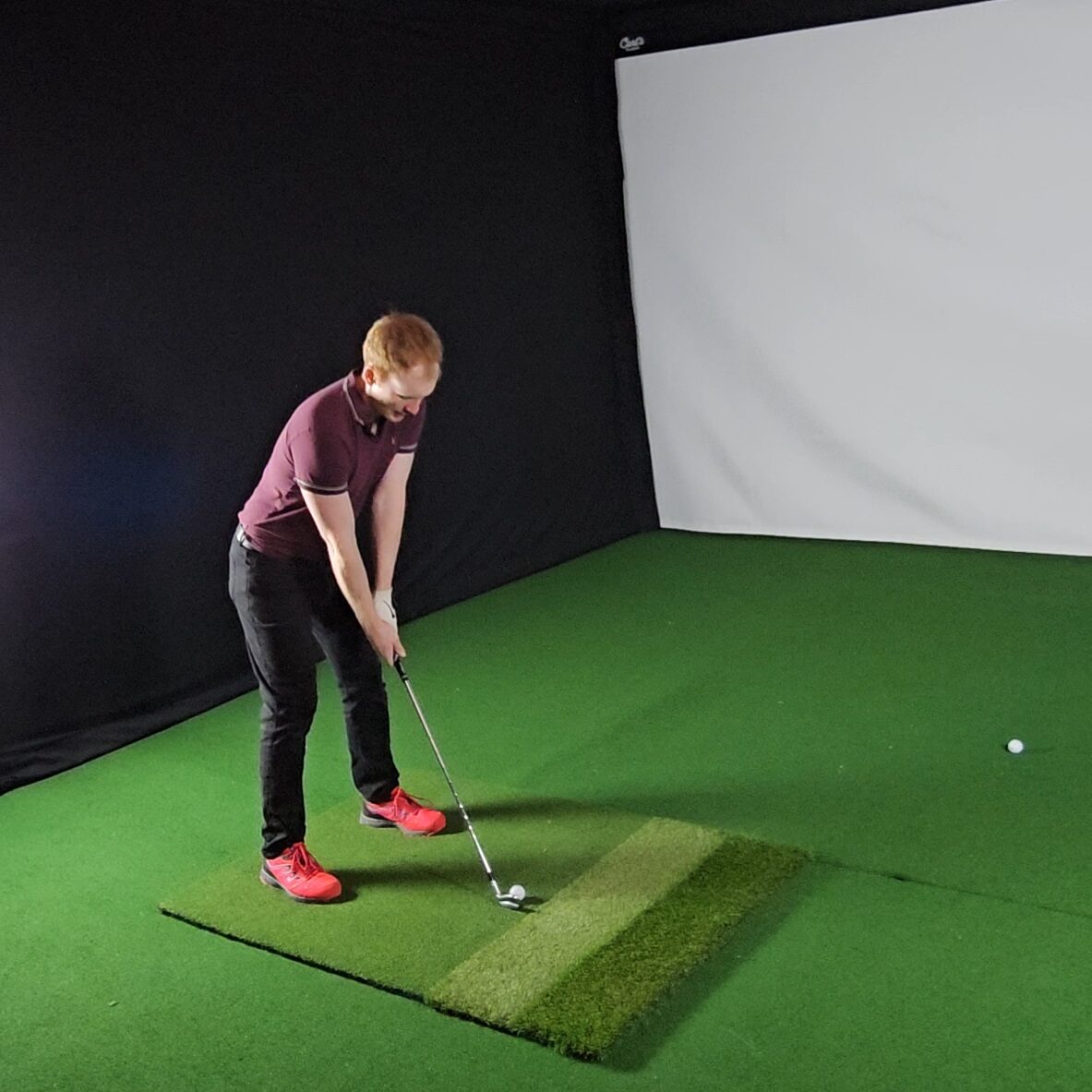
Hello! My name is Alex and it is my mission to bring you all the information you need to build your own home golf simulator! I hope mygolfsimulator.com helps you on your journey to better golf at home!
LEGAL INFORMATION
On this site, you'll find articles on all aspects of building a golf simulator. I will also link to other sites where you can buy some of the simulator components. Some of these links may be affiliate links, which means if you click them I gain a small commission at no extra cost to you. This really helps out me and my site so thank you in advance! mygolfsimulator.com and all related social media accounts are property of Awonline LTD.




